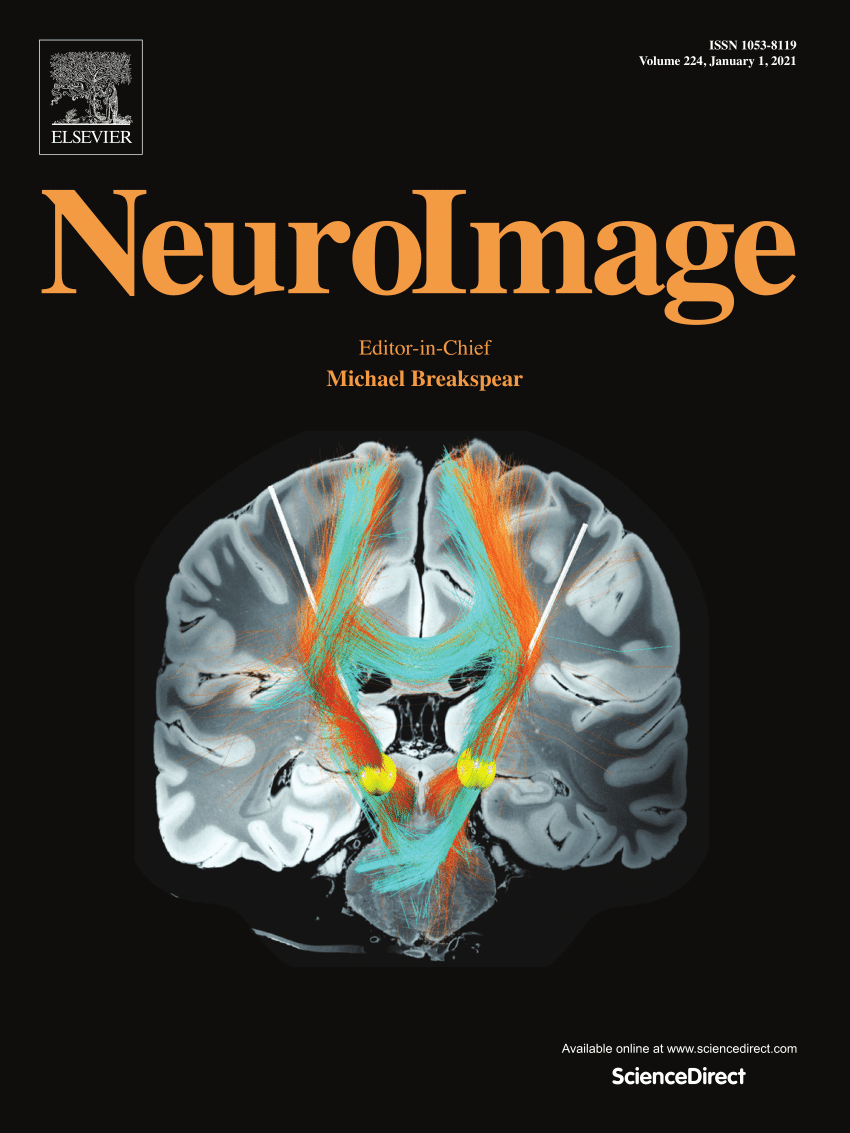心脏代谢状态将神经血管负荷与大脑结构和功能联系起来:来自脑电图和MRI的证据。
IF 4.7
2区 医学
Q1 NEUROIMAGING
引用次数: 0
摘要
衰老会影响大脑的结构和功能,以及代谢和血管过程,导致能量损伤。虽然衰老中局部神经代谢功能障碍已被充分证明,但全身心脏代谢和血管标志物对大脑结构和功能的影响仍知之甚少。我们研究了心脏代谢功能障碍(通过适应负荷指数测量)和神经血管负担(通过白质高强度测量)与大脑变化之间的联系,包括脑室和海马体积以及脑电图活动,随着年龄的增长。分析了196个年龄(20-75岁)的健康个体的数据,我们发现适应负荷指数与白质高强度之间存在显著的正相关,与年龄无关。白质高信号也与脑室增大呈正相关,但与海马萎缩无关。适应负荷指数介导了白质高强度与心室容积之间的关系。在脑功能方面,谱非周期指数的变化与白质高强度和适应负荷指数有关,但与周期性α功率无关。该指数介导了谱非周期指数与白质高强度之间的关系。因此,研究结果表明,通过适应负荷指数测量的心脏代谢状态在衰老时的大脑健康中起着至关重要的作用,特别是影响心室增大和增加的非周期活动。本文章由计算机程序翻译,如有差异,请以英文原文为准。
Cardiometabolic state links neurovascular burden with brain structure and function: Evidence from EEG and MRI
Aging affects brain structure and function alongside metabolic and vascular processes leading to energetic impairments. While local neurometabolic dysfunction in aging is well-documented, the influence of systemic cardiometabolic and vascular markers on brain structure and function remains less understood. We examine the link between cardiometabolic dysfunction (measured by an allostatic load index) and neurovascular burden (measured by white matter hyperintensities), and their associations with brain changes, including ventricular and hippocampal volume, as well as EEG activity, across the adult lifesplan. Analyzing data from 196 healthy individuals across ages (20–75 years), we found a significant positive correlation between allostatic load index and white-matter hyperintensities, irrespective of age. White matter hyperintensities are also positively linked with ventricular enlargement, but not hippocampal atrophy. The allostatic load index mediated the relationship between white-matter hyperintensities and ventricular volume. Regarding brain function, changes in the spectral aperiodic exponent but not periodic alpha power were linked to white matter hyperintensities and the allostatic load index. The allostatic load index also mediated the relationship between spectral aperiodic exponent and white matter hyperintensities. Thus, findings suggest that the cardiometabolic state, as measured by the allostatic load index, plays a crucial role in brain health in aging, particularly influencing ventricular enlargement and increased aperiodic activity.
求助全文
通过发布文献求助,成功后即可免费获取论文全文。
去求助
来源期刊

NeuroImage
医学-核医学
CiteScore
11.30
自引率
10.50%
发文量
809
审稿时长
63 days
期刊介绍:
NeuroImage, a Journal of Brain Function provides a vehicle for communicating important advances in acquiring, analyzing, and modelling neuroimaging data and in applying these techniques to the study of structure-function and brain-behavior relationships. Though the emphasis is on the macroscopic level of human brain organization, meso-and microscopic neuroimaging across all species will be considered if informative for understanding the aforementioned relationships.
 求助内容:
求助内容: 应助结果提醒方式:
应助结果提醒方式:


